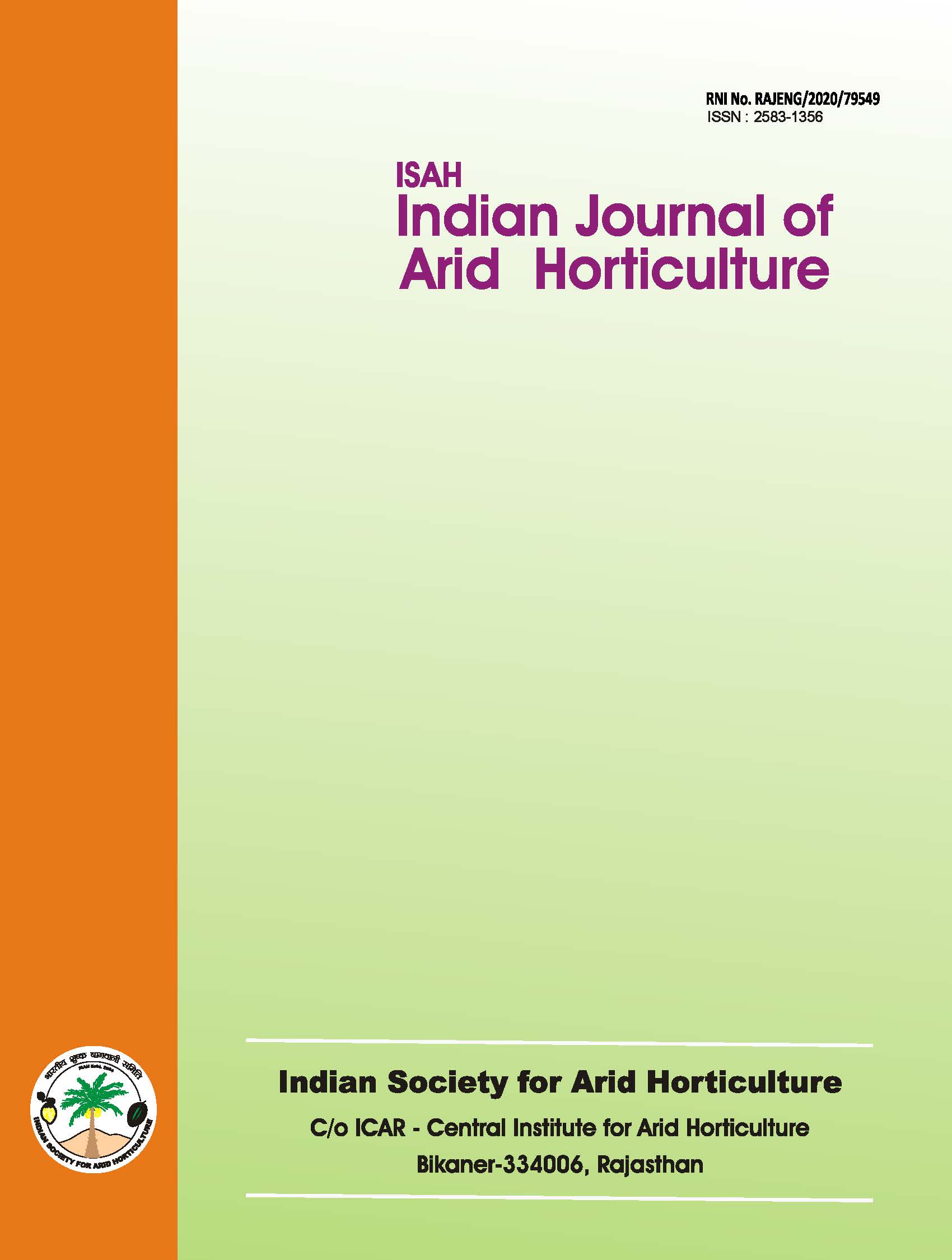Dormancy and seed germination in Solanum nigrum Linn: A wild medicinal plant
Keywords:
cultivated strains, dormancyAbstract
Solanum nigrum L. commonly known as black nightshade is a wild medicinal plant. In general, wild species are sources of desirable genes in any crop improvement programme. However, the precise use of such species in future breeding cannot be determined until they are collected, grown and their compatibility with cultivated strains assessed. The demand for this leafy vegetable was increased from 2077.9 (2001-02) to 2192.2 tonnes (2004-05), indicating the commercial value and the farmers are moving into its production. Recognizing the importance as a leafy vegetable plant in urban and rural areas in addition to ethnic and medicinal value, conservation of the species needs attention. Most of the relevant germplasm is undoubtedly being conserved by the users in in-situ, especially where the plants are used for culinary purpose. However, there is a need to conserve the seeds of this species in Seed Gene Bank (SGB). Under National Agricultural Technology Project (NATP-PB), Solanum nigrum genotypes were collected from different geographical regions for conservation in National Genebank, NBPGR, New Delhi. While testing the viability of seeds for long term conservation it was observed that seeds of some species exhibited dormancy/ hardiness ranging from 92-98%. The variation in hardiness of seed is possibly due to different environmental conditions of their place of origin, degree of maturation, time of collection and length of storage period. Induction of germination after breaking long term dormancy is required for rapid multiplication of this hardy vegetable crop. Therefore, an experiment was carried out to standardize the best treatment to overcome the dormancy and to attain high germination. The overall results of various treatments on the seeds collected from different sources are presented in this paper.Downloads
References
Baskin, C. C., Milberg, P., Anderson, L., and Baskin, J. M. (2001). Seed dormancy-breaking and germination requirements of Drosera englica, an insectivorous species of the Northern Hemisphere. Acta Oecologica, 12: 1-8.
Bond, W., and Turner, R. J. (2002). The biology and non-chemical control of Black Nightshade (Solanum nigrum L.). New Zealand Plant Protection, 55: 1-6.
Sharma, L. N., and Singh, P. (2007). Indian Journal of Arid Horticulture, 2(2): 65-67.
Gao, W. H., and Yamata, H. (1991). Germinability of eggplant seeds with different dormancy-breaking methods. Plant Physiology Communications, 27: 190-192.
Gupta, V., and Singh, B. B. (1996). Pre-treatments to improve germination in Solanum viarum Dunal. Indian Journal of Plant Genetic Resources, 9: 123-128.
Hartman, H.T., Kester, D. E., Davies, F. T. Jr., and Genere, R. L. (2002). Plant Propagation: Principles and Practices (7th ed.). Prentice-Hall Inc., New Jersey, USA, pp. 199-236.
International Seed Testing Association (1999). International rules for seed testing. Seed Science and Technology, 27, supplement, pp. 333.
Krishnasamy, K., and Palaniappan, M. S. M. G. (1990). Studies on seed dormancy in eggplant var. Annamalai. South Indian Horticulture, 38: 42-44.
Panse, V. G., and Sukhatme, P. V. (1985). Statistical Methods for Agriculture Workers. ICAR Publication, New Delhi, pp. 157-165.
Salisbury, E. (1961). In: Weeds and Aliens, Black Nightshade. Collins, London, pp. 28, 187-199.
Tucker, W. G., and Gray, D. (1986). The effect of seed drying and gibberellin treatment on the germination performance of developing carrot seeds. Plant Growth Regulators, 4: 363-370.

